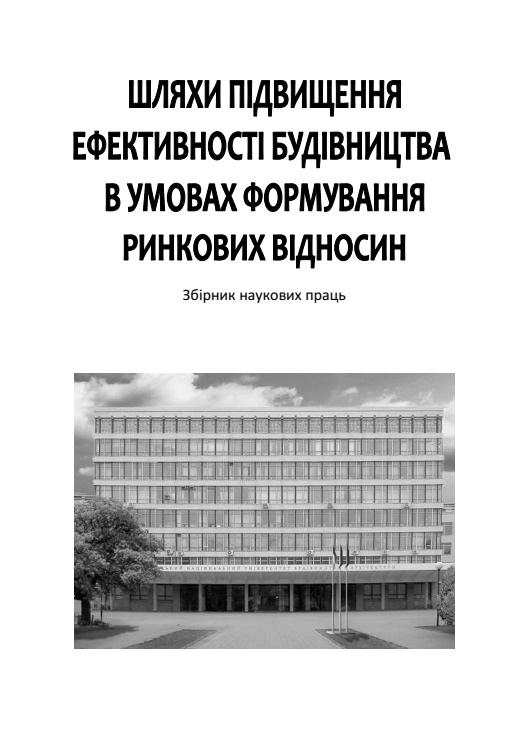Use of flux limestone of steel-smelting production for the purpose of recycling
DOI:
https://doi.org/10.32347/2707-501x.2018.35.28-34Keywords:
granite macadam, fluxing limestone, crushed gravel, concreteAbstract
The field of economic application of various types of fillers is expanding all the time due to permanently changing requirements for concretes concerning their operating qualities, application fields, physical-technical properties, durability conditions etc. Numerous studies have established that the most rational use of various types of fillers in the concrete greatly influences on the technical characteristics of the concrete of building structures. Results of the studies of the concrete prepared with crushed fluxing limestone, which is a secondary product of metallurgical industry, are presented. On the basis of the study conducted, it is shown that the fluxing limestone can be used for products and structures of heavy-weight concrete along with such fillers as granite macadam and natural gravel.
References
Вайсберг Л.А., Каменева Е.Е., Аминов В.Н. Оценка технологических возможностей управления качеством щебня при дезинтеграции строительных горных пород / Строительные материалы. 2013. № 11. С. 30–34.
Дворкин Л.И., Дворкин О.Л. Строительные материалы из отходов промышленности. Ростов н/Д: Феникс, 2007. 368 с.
Вайсберг Л.А., Каменева Е.Е. Исследование структуры порового пространства гнейсогранита методом рентгеновской компьютерной микротомографии / Обогащение руд. 2013. № 3. С. 37–41.
Олейник П.П., Олейник С.П. Организация системы переработки строительных отходов. М.:МГСУ, 2009. 251 с.
Ильичев В.А., Карпенко Н.И., Ярмаковский В.Н. О развитии производства строительных материалов на основе вторичных продуктов промышленности / Строительные материалы. 2011. № 4. С. 36–42.
Горшков В.С., Александров С.Е., Иващенко С.И., Горшкова И.В. Комплексная переработка и использование металлургических шлаков в строительстве / Под ред. В.С. Горшкова. М.: Стройиздат, 1985. 272 с.
Вешнякова Л.А., Фролова М.А., Айзенштадт А.М., Лесовик В.С., Михайлова О.Н., Махова Т.А. Оценка энергетического состояния сырья для получения строительных материалов // Строительные материалы. 2012. № 10. С. 55–56.
Полейко Н.Л., Леонович С.Н. Физико-механические показатели бетона на кубовидном щебне / Строительные материалы. 2015. № 7. С. 13–16.
Пучин К.Г. Вопросы экологии использования твердых отходов черной металлургии в строительных материалах / Строительные материалы. 2012. № 8. С. 54–56.
Юшков Б.С., Семенов С.С. Металлургические шлаки в производстве железобетонных свай, эксплуатирующихся в неагрессивной среде / Строительные материалы. 2012. № 12. С. 14–15.
Петров В.П., Токарева С.А. Пористые заполнители из отходов промышленности / Строительные материалы. 2011. № 11ю С. 46–50.
Старчуков Д.С. Бетоны ускоренного твердения с добавками твердых веществ неорганической природы / Бетон и железобетон. 2011. № 4. С. 22–24.
Загер И.Ю., Яшинькина А.А., Андропова Л.Н. Сравнительная оценка продуктов дробления горных пород месторождений нерудных строительных материалов Ямало-Ненецкого автономного округа / Строительные материалы. 2011. № 5. С. 84–86.
Добшиц Л.М., Магомедэминов И.И. Определение морозостойкости крупного заполнителя для тяжелых бетонов / Бетон и железобетон. 2012. № 4. С. 16–19.
Корнеева Е.В. Исследования шлаков сталеплавильного производства с целью вторичного использования / Строительные материалы. 2012. № 8. С. 62–63.
Downloads
How to Cite
Issue
Section
License
Copyright (c) 2020 S. Leonovych, N. Poleiko

This work is licensed under a Creative Commons Attribution 4.0 International License.
Authors who publish with this journal agree to the following terms:
- Authors retain copyright and grant the journal right of first publication with the work simultaneously licensed under a Creative Commons Attribution License that allows others to share the work with an acknowledgement of the work's authorship and initial publication in this journal.
- Authors are able to enter into separate, additional contractual arrangements for the non-exclusive distribution of the journal's published version of the work (e.g., post it to an institutional repository or publish it in a book), with an acknowledgement of its initial publication in this journal.
- Authors are permitted and encouraged to post their work online (e.g., in institutional repositories or on their website) prior to and during the submission process, as it can lead to productive exchanges, as well as earlier and greater citation of published work (See The Effect of Open Access).

